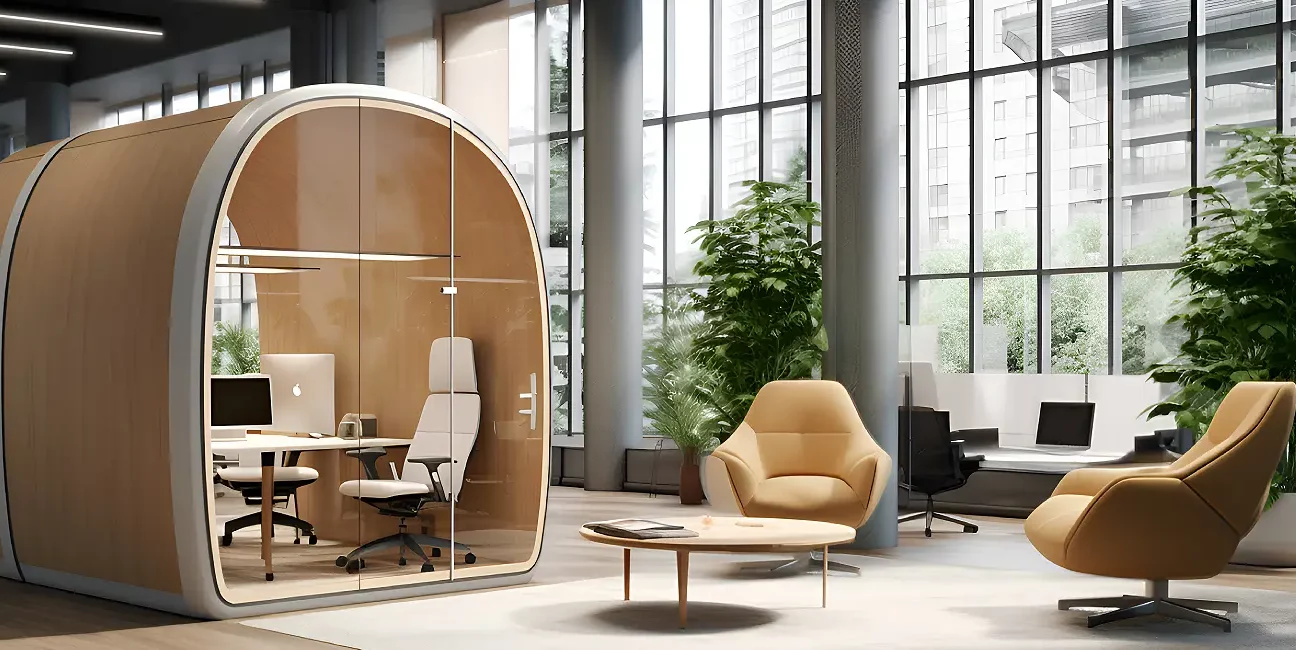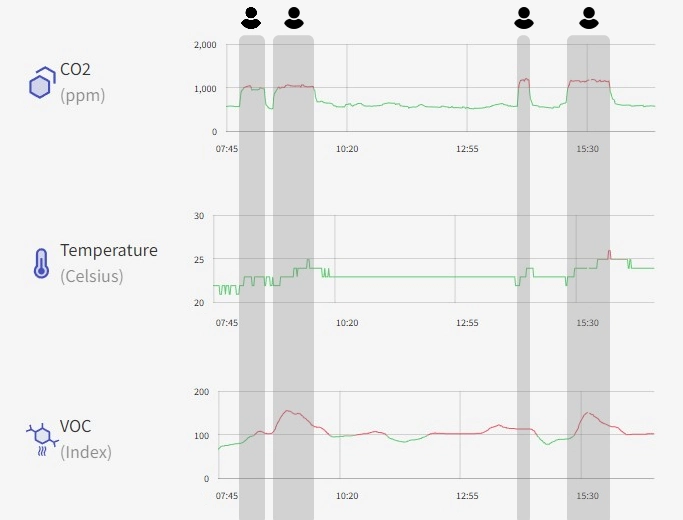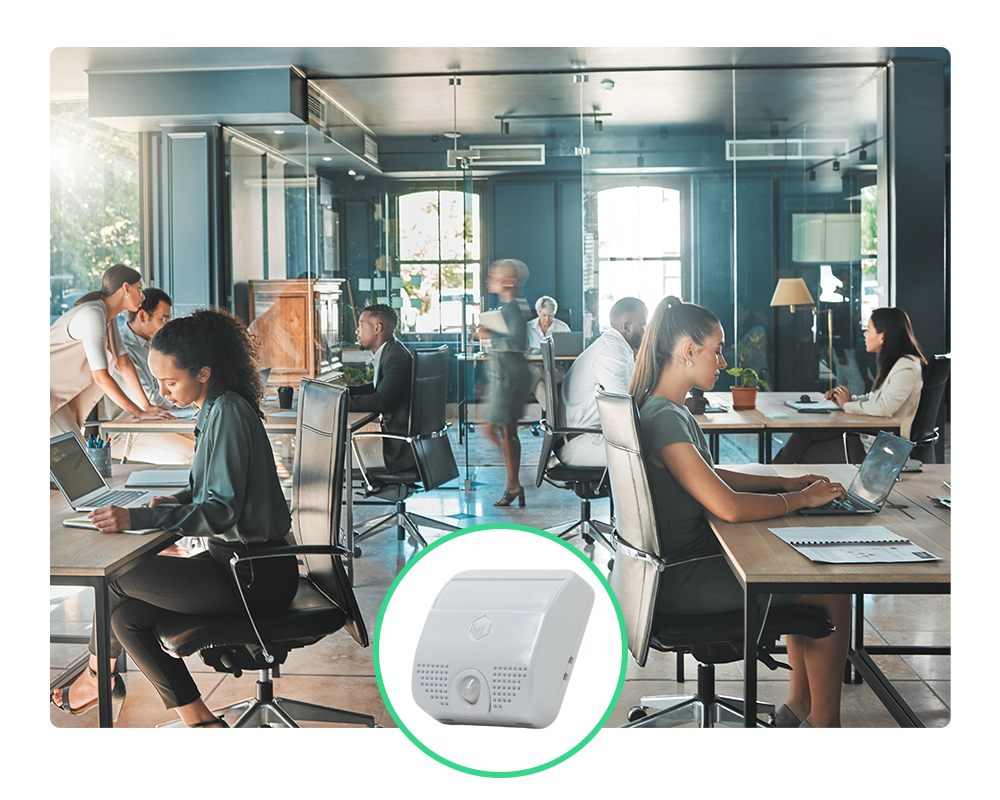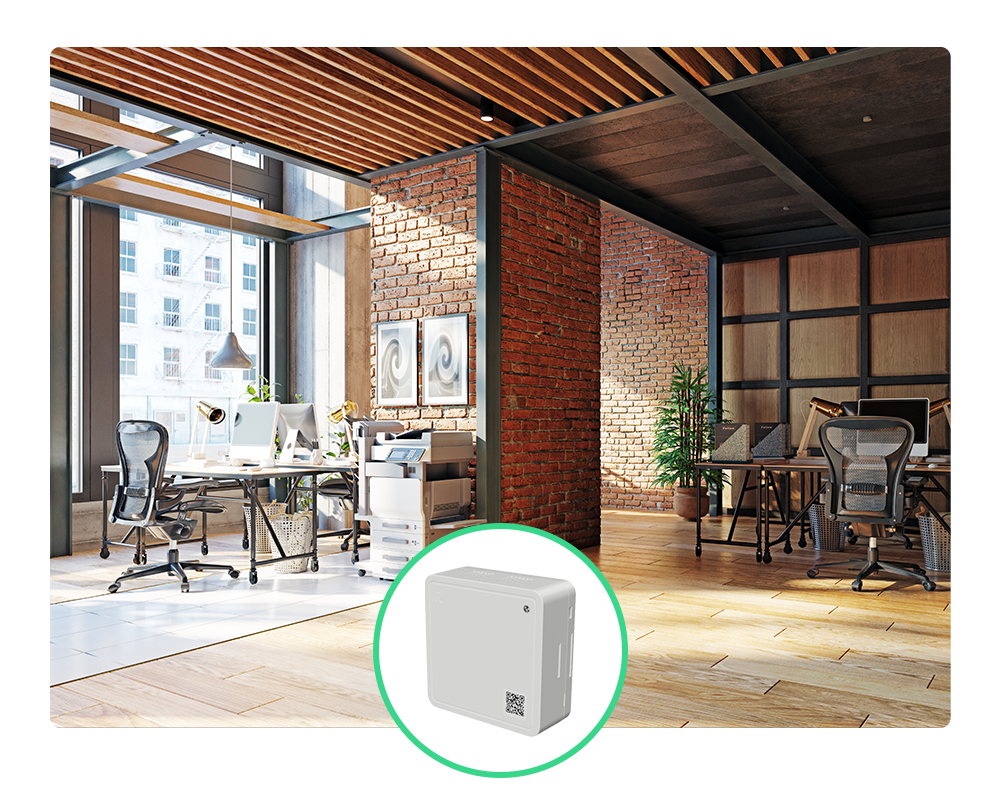

In the modern workplace, the importance of personal space and quiet zones cannot be overstated. Especially, the office pod (also known as a workplace phone booth), which is a small haven designed for privacy during calls and video meetings. But have you ever thought about the quality of the air you’re breathing within these compact oases?
Identifying Misuse: Office Pods
Within our own Freespace offices, we found that the average use of our phone booths was sitting at 32 minutes, with the longest being >3 hours of continuous usage. This misuse leads to uncomfortable working conditions and a reduction in performance, whilst withholding these booths from other users. With no occasional door opening to clean out the stagnant air, it simply sits there and gets worse.

Identifying misuse of enclosed spaces such as phone booths in the workplace is crucial for maintaining a healthy environment. Our study found that misuse is often characterised by extended occupancy exceeding 30 minutes.
Poor Air Quality: An Unseen Threat
Amid the convenience of workplace phone booths lies a significant concern that warrants our attention. A glance at the graph reveals that as the levels of carbon dioxide (CO2) within these booths double, a subtle yet concerning shift occurs. Simultaneously, the temperature registers a rise of 2 to 4 degrees, and volatile organic compounds (VOCs) surge by approximately 50%. These shifts occur even when standard ventilation systems are operational, demonstrating the intrinsic connection between workplace usage and impact.

It takes a turn towards the implications of prolonged use. As time stretches on, these changes amplify, weaving a tale of escalating discomfort and potential health consequences. The CO2 levels climb, the temperature inches higher, and VOCs continue to accumulate. What was initially a mere inconvenience evolving into an environment that not only hampers productivity but also poses potential health risks. The graph above serves as a stark reminder that our choices and actions within seemingly innocuous spaces can have far-reaching effects. It emphasises the need for mindful design and thoughtful maintenance, as well as an awareness of the cumulative impact of prolonged usage.
Promoting responsible use of workplace phone booths is essential to prevent a range of potential health issues, including:
- Irritation of the eyes and throat
- Decreased cognitive function
- Aggravation of allergies and respiratory conditions
- Spread of illness
Taking Action: Air Quality in Office Pods
To combat the decline in air quality within enclosed spaces, proactive measures are crucial.
By diligently following these strategies, phone booths can fulfil their intended purpose without compromising air quality or the well-being of employees.
- Begin by closely monitoring booth occupancy using advanced sensors.
- Simultaneously, raising awareness among employees about the potential health risks associated with prolonged booth usage is vital.
- Encouraging consistent airflow by leaving booth doors open when unoccupied and enforcing clear usage guidelines can dramatically enhance the quality of the workspace environment.
Establishing workplace policies for responsible booth usage is vital, and many companies have such guidelines to safeguard employees. Sensors offer an extra layer of assurance, ensuring compliance with these policies and promoting a healthy, respectful, and productive atmosphere. Additionally, sensor insights, including light and noise levels, inform workspace design, enabling organisations to create tailored, employee-friendly environments.
Smarter Use: The Office Pod
Imagine a workspace where air quality is optimised, and employees thrive. Freespace sensors pave the way for such a reality. Common air quality sensors might fall short in identifying specific phone booth related issues, but this is where Freespace sensors excel. Tailored to monitor enclosed environments, Freespace sensors offer a dedicated solution for detecting overused booths. Unlike generic sensors, our comprehensive sensor suite ensures businesses can match the right sensor to the right space, enabling precise insights into factors like light, noise, and more.
By focusing on improving air quality and enhancing design based on real data, companies can unlock a myriad of benefits. The advantages that are waiting to be tapped into are as follows:
- Reduced sick days
- Increased productivity
- Elevated employee morale
- Higher satisfaction levels
- Reduced costs associated with employee healthcare
- Improved workplace design
Incorporating measures to improve air quality in phone booths and other areas of the office space aligns with a broader trend of organisations recognising the importance of creating a holistic, employee-centred work environment. Such efforts not only result in tangible improvements in health and productivity but also contribute to a more positive organisational culture and long-term success. But to acquire that, basic air quality sensors cannot offer real-time data and insights, so it is vital to consider the right one. So, now let’s explore 2 major sensors to consider in 2023 measuring occupancy and air quality.

ONE sensor is a patented non-optical sensor that acquires data with > 98% accuracy rate. This actionable intelligence can be configured to enforce individual organisational policies on space management (for instance, releasing space if unoccupied for a longer time) and provide a true and accurate picture of occupancy in real-time.
Benefits:
- Reducing real estate and operational costs
- Achieving significant returns on investment
- Supporting a frictionless and seamless employee journey
- Supporting energy reduction targets and initiatives
- Enforcing organisational policies on space management

PAM sensor is a patented technology for noise, light, pressure, temperature, humidity, CO2, VOC, particulate matter, formaldehyde, and a range of other parameters. The sensor is designed to immediately alert building managers based on threshold breaches (i.e., where CO2 has breached a certain set threshold).
Benefits:
- Improving employee experience
- Reduced employee sickness levels
- Reduced operational costs
- Automated FM activity
- Improved organisational reputation
Breathing Life into Workspace Design
The air quality within these workplace phone booths directly impacts employee health and overall workplace performance. Freespace sensors provide an innovative solution that not only monitors air quality but also informs decisions about space usage and design.
By leveraging the insights gleaned from Freespace sensors, businesses can create healthier, more productive work environments that are conducive to success. It’s time to prioritise the air you breathe, revolutionise your workspace, and elevate your employee experience.
Don’t let the air quality in your office pod go unnoticed—discover how Freespace sensors can transform your workplace, request a demo.


